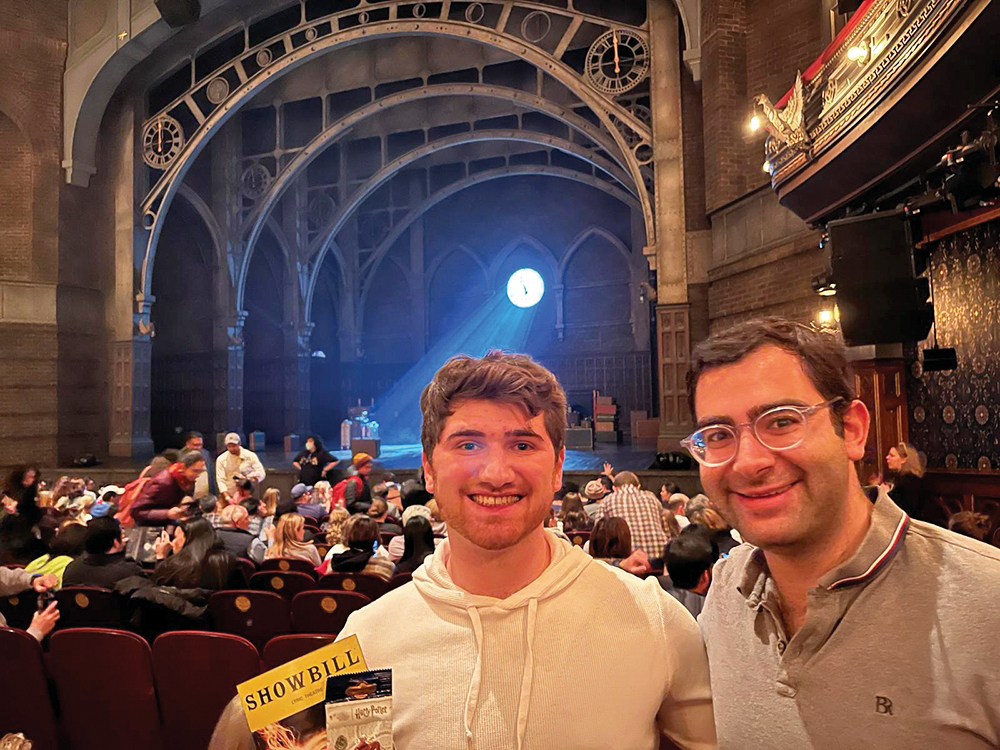
Every well-written saga eventually has to come to a close, bringing along with it the sadness felt as you need to say goodbye to characters and stories you’ve, in a way, accompanied on a journey. For millions of readers around the world, including myself, we felt that way after the seventh and final Harry Potter book was released in July 2007.
Thankfully, years later, similar to how many other franchises have been revived years after their seemingly “finale,” such as iCarly, which rebooted nine years after its finale; “Star Wars,” which added another film (“The Force Awakens”) 10 years after its last film (“Revenge of the Sith”); and “Ghostbusters,” which added a third film 32 years after “Ghostbusters II” to name just a few examples, the Harry Potter franchise added an “eighth” book, “Harry Potter and the Cursed Child” nine years after its final book, “The Deathly Hallows,” had been released.
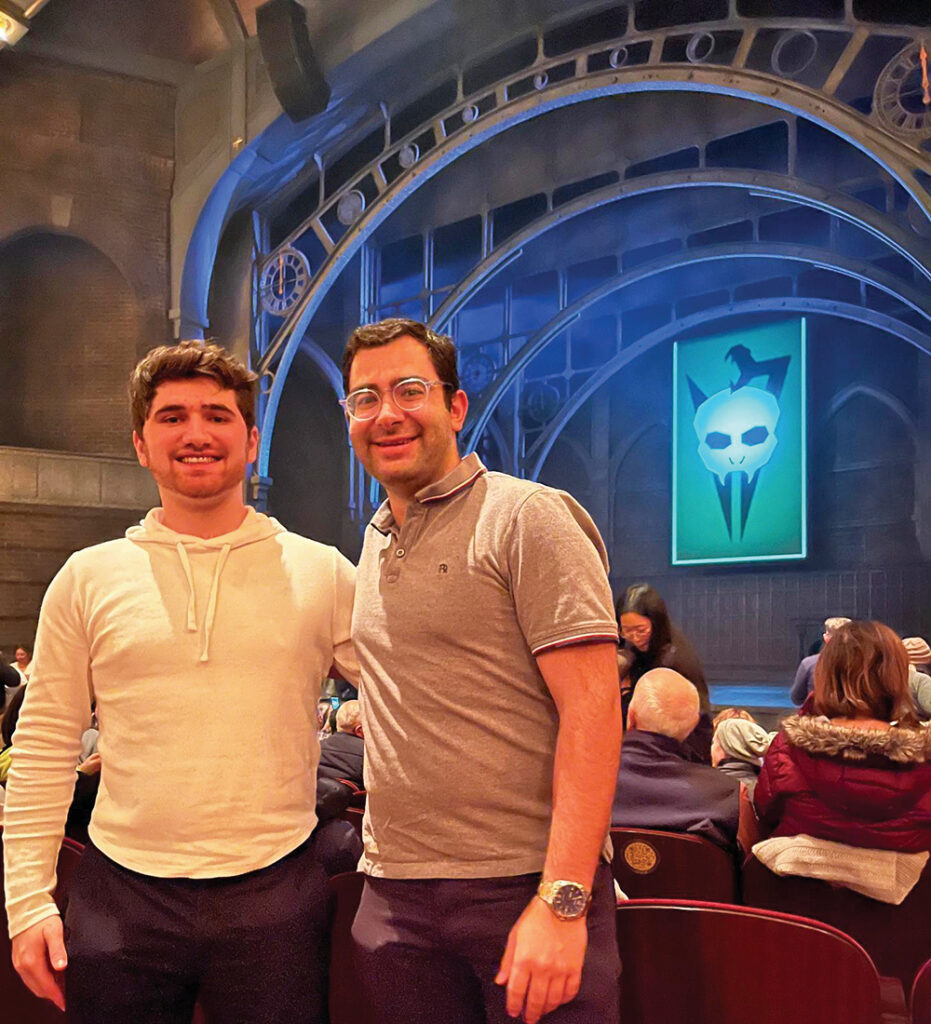
Whereas those other franchises created additional content in a consistent medium (whether as a new movie or TV show), “The Cursed Child” was written as a screenplay for a Broadway show, going against the traditional novel format of the books in the series.
From a young age, before I knew how to read well, I had watched and loved the Harry Potter films, blown away by all of the lifelike magical creatures and fantastic stories within each film. These films are some of the best ever made and still hold up well to this day despite the advancements in film technology. While in third grade, after reading more elementary books, I was encouraged by my parents to try reading the Harry Potter series. To a third grader, seeing a 300-page book can be quite intimidating, but I decided to give it a shot. While it took me several years and many Shabbosim spent entirely reading, I lovingly was able to read each book of the series and even was able to read “The Deathly Hallows” when it was first published in 2007.
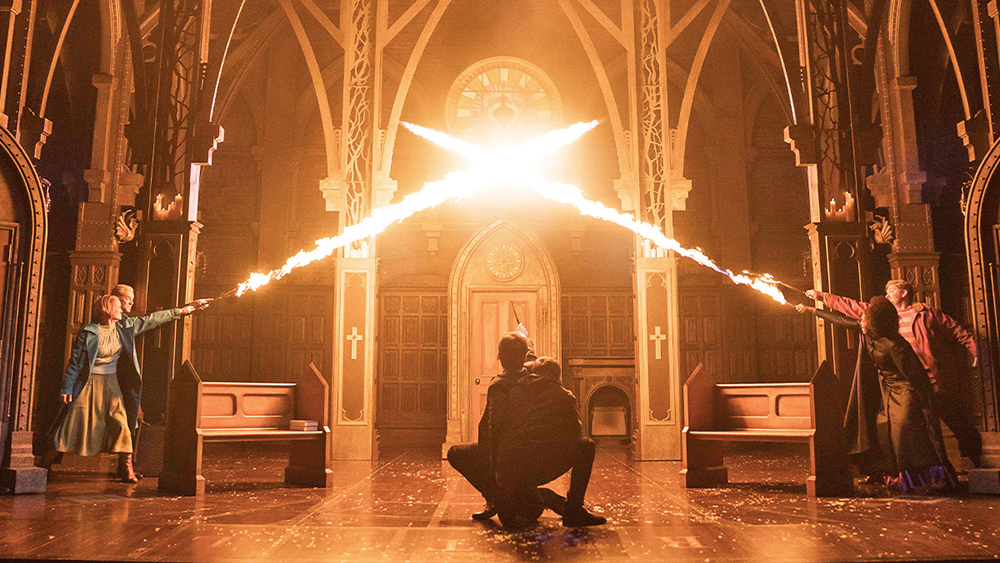
I thought that was the end of the story until “The Cursed Child” was released in my senior year of high school in 2016. Excited and in preparation leading up to the new “final” chapter, I actually reread all of the books. Since then, I’ve read “The Cursed Child” multiple times as it’s by far the shortest book in the franchise. Besides the additional stage and setting cues sprinkled throughout, it’s almost entirely dialogue in contrast to the rest of the books which are full-fledged novels. “The Cursed Child” is by no means a perfect story; it has its flaws, especially with its plot, which I will cover a little, and it doesn’t hold up as well as the first seven books. But still, it’s a great, fun read and I, who am not an especially fast reader, can finish reading the book in a couple of hours.
Despite having read the play multiple times, I had not yet seen the Broadway show adaptation live in person until this past week when I went with my good friend Abie Benjamin, another Harry Potter enthusiast. Together last summer, we visited the Harry Potter: The Exhibition (see issue 491 for the full story). As Abie and I entered the Lyric Theater which houses the theatrical performance, we were impressed by the luxurious ambiance that surrounded us. The floors were adorned with red carpets from which black marble columns stood, supporting the theater. The tops of the columns were painted gold and contained light fixtures within them.
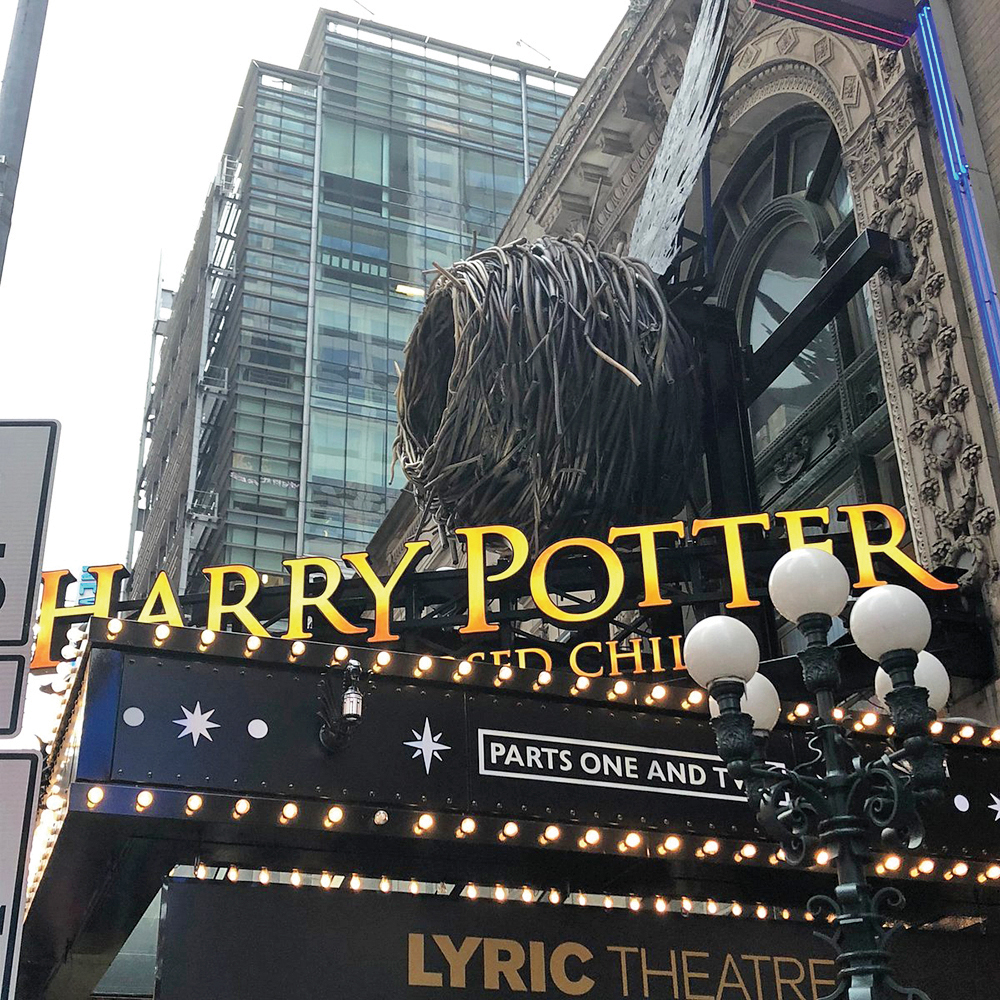
We passed by numerous gift shops selling Harry Potter memorabilia and souvenirs. I didn’t purchase any swag but since I hadn’t eaten dinner, I went to order a Harry Potter-themed chocolate frog (just chocolate, but it looks like a frog, and it’s OU Kosher) at the counter.
However, the cashier graciously informed me that if I ordered a Fiji water bottle to be delivered to my seat, then they would give me a chocolate frog too, which would be $1 less than if I bought one at the counter without the water bottle! So I heeded his advice, ordering a Fiji water bottle to my seat. Once we got to our seat in the orchestra section, an attendant right away came over, handing me a goodie bag with the water bottle and chocolate frog.
Once the show began, the story left off right where the epilogue of “The Deathly Hallows” had ended. Harry Potter and his wife Ginny were at Kings Cross station where they were sending their children Albus and James off to the Hogwarts Express to take them to the wizarding school, Hogwarts. Albus was nervous as it was his first experience as a student, but Harry assured him that everything would be alright. That’s exactly how the novel left off, leaving readers feeling all warm and fuzzy with good closure.
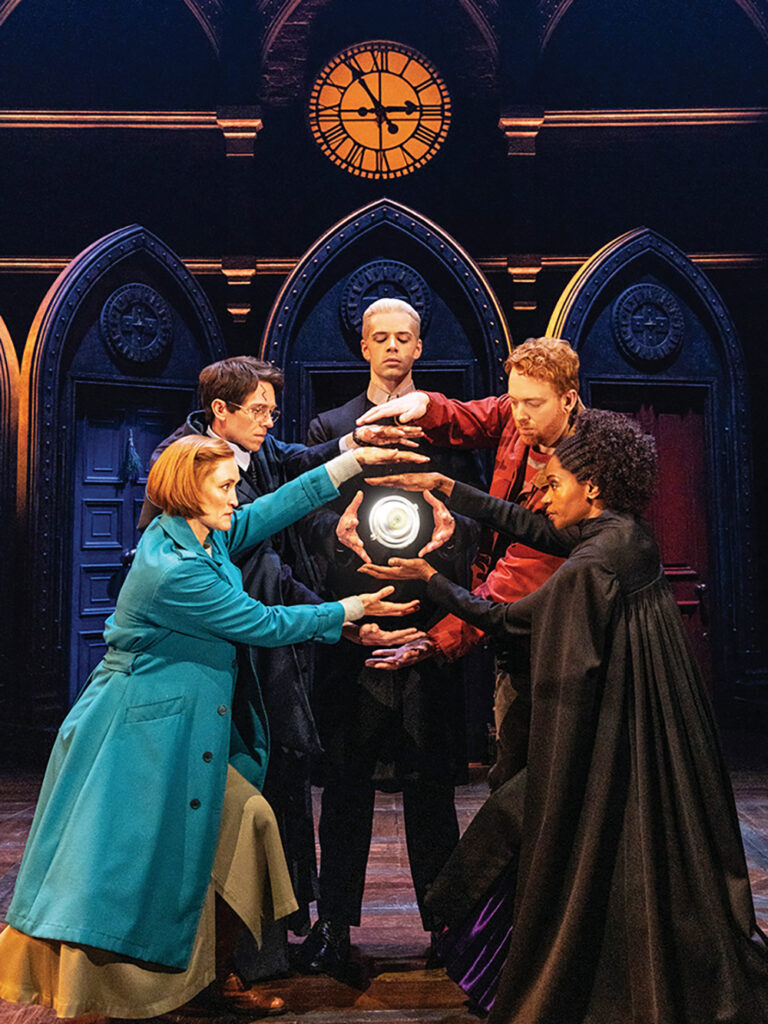
Except, the play goes on and shows how everything does not go well on its own. The show’s first half focuses on Albus’ early years at Hogwarts. Unlike Harry who loved Hogwarts and grew up a hero whom everyone respected, Albus is a loser and a shell of the man his father had been. Albus gets bullied and struggles in school. Over the years he grows more bitter and depressed, and Harry is unable to connect with him, partly because he never had his own parental figures in his life because they had died when he was a baby, but more so because he never went through the struggles Albus experiences.
What’s worse is the fact that Albus blames most of his issues on Harry for placing such a heavy weight on his shoulders by having him be the son of the wizard messiah, a position to which he is unable to strive. Harry also has a hard time masking his disappointment in Albus, who is very perceptive and can sense Harry’s true feelings.
It’s a surprisingly deep and mature situation for a series that started as a children’s fantasy genre. But much like how each book in the Harry Potter series gets longer, more complex, and darker-toned as Harry and the readers grow older, “The Cursed Child” continues onto the next stage of real-life parenting issues.
I would recommend purchasing the book and reading it before seeing the show. Many of the scenes cut back and forth between Albus and his best friend Scorpius at Hogwarts and Harry juggling his public official duties at the Ministry of Magic. The plotlines eventually intertwine, but later on there is a bit of time-traveling involved which further complicates things. Albus, who is in a dark mental state, decides that the only way he can redeem himself is by going back in time to save a person who died unjustly because of his connection to Harry. So with all of the time and setting jumps, it definitely can be very confusing to watch live. If, however, you’ve read the book first, it will be much clearer. Unless you love surprises, then don’t, but don’t say I didn’t warn you!
The effects of the show were absolutely enchanting. The wizarding fights, with spell casting and fireballs soaring through the air, were incredibly well-executed. Some of my favorite tricks included books held by the actors “magically” flipped through pages. Often objects and even people levitated effortlessly. When Scorpius ate Pepper Imp, smoke somehow blew out of his ears, making a loud whistling noise. But the absolute coolest spell occurred whenever they needed to travel through a phone booth: we would see the wizard enter the booth, dial a number, and then their cloak was sucked into the machine in a flash before our eyes and they had disappeared.
The costumes and set designs were also out-of-this-world. Each scene was in a different location, yet the show always had the right background and props to bring it to life. For costumes, they masterfully showed large centaurs stomping around or dementors flying around looking for souls to suck. Even the underwater scenes were done well, with one scene appearing as if the characters were floating in a lake, but in reality, they were being dangled by wires with a wavy, murky screen in front. The coolest moments were whenever the Time-Turner was used, pulsing the room to life with clocks that appeared to be spinning backward or forward, depending on the destination to where the protagonists were traveling.
Personally, I enjoyed the second half of the show much more than the first. While the first half speeded through the first four years of Albus’ time at Hogwarts, the Harry Potter series has seven books spanning over seven years — one year for each book. So I didn’t love that this play covered multiple years. The second half of the show was much more grounded and didn’t cover a long period quickly (although there were several time traveling scenes, but each scene doesn’t span longer than at most a few days). I also found the effects in the second half to be better, culminating with the final battle, which was a true highlight.
Overall, the show had a great balance of humor, stunning visuals, amazing set designs, and great acting. My favorite actor was the character of Harry Potter played by Steve Haggard. Abie liked Scorpius the most, played by Erick Peterson, since he was hysterical, a fact with which I do agree. But I found Harry’s character to be very compelling and relatable, and he always stole the show whenever he was on the stage. It’s a long show — around three-and-a-half hours including intermission; make sure to use the restrooms during the break in the middle.
While I have been praising the effects so far, and for good reason, going into the show I had heard the effects were the pinnacle of Broadway. Honestly, I found the “Back to the Future” effects to be even better (see issue #510), so if you’re going just for cool visuals, I would recommend seeing that show. Also, the Time-Turner logic seems a little inconsistent with how it had been portrayed in the third book, “The Prisoner of Azkaban,” where, when Harry traveled back in time, it didn’t create a new timeline, but had a time loop where he always bumped into himself. In “The Cursed Child,” whenever they used the Time-Turner, it created new branches of time with completely different outcomes and scenarios transpiring from their time manipulation.
But if you’re a fan of Harry Potter or looking for an interesting, deep and magical performance, then you need to check out “The Cursed Child” as soon as you can. It was an awesome performance and I can’t wait to reread the book for the half-dozenth time, this time with better mental visuals to enhance my enjoyment.
Zachary Greenberg is a consultant at Semler Brossy and the TABC track coach. Last week, Zack’s great-grandmother Birdie Dropkin was unfortunately niftar and she got to live to be a great-great-grandmother for a few months. Zack also recently watched the show “Echo” on Disney+. If you have any recommendations of fun places for him to cover, email [email protected].









